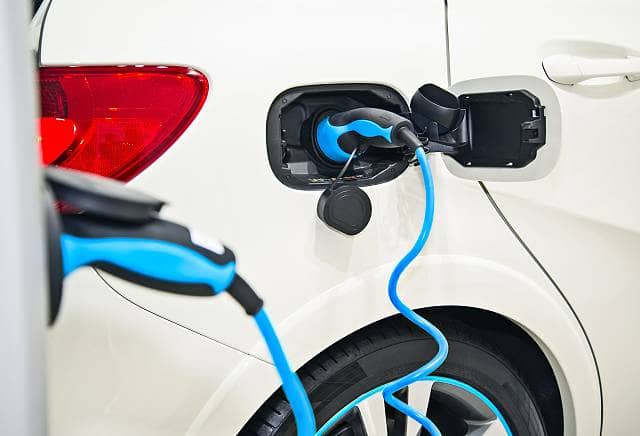When we talk about advancements in electric car technologies, we often think about the technology inside these vehicles. This technology is what makes these electric vehicles work the way they do and enables them to be as smart as they are. There are some surprising and exciting technologies that will change how we view and use electric cars and we discuss some of them below.
Bidirectional charging
With most devices, you use the charger to get power from the wall or from an energy source and into the device being charged. Bidirectional charging is going to change the way we think about charging electric vehicles. It will allow us to get power into these vehicles and to get it out once we need it. We have already seen this in the past with car chargers, but what electric vehicle manufactures have in store is much better.
Bidirectional charging will be used to provide power for our homes when we need it, to save power to use when there is no power, to sell power to power companies in case there is a shortage in the network, and to become energy-efficient by using electric vehicles as power storage options in homes that already use solar panels.
The best example of how useful bidirectional charging is in the new Ford Lightning Pickup which can power a regular home for a few days without it needing a recharge.
Improvements in charging infrastructure tech
As the number of electric vehicles increases on the road, the demand for charging stations will also increase. Also, the charging tech and infrastructure we currently have will have to change as cars become smarter and more demanding.
Electric vehicle charging technology has come a long way in the past 10 years or so, with research showing that the number of charging stations across Europe now stands at over 190,000. Improvements in the existing infrastructure will make sure it is ready for the increase in the number of people driving electric vehicles, especially after the timeframes for the elimination of petrol and diesel vehicles passes.
In addition to improvements in the current charging infrastructure, the number of charging stations will also have to increase. Even with a lot of people adopting home charging, the charging network infrastructure will have to be prepared to deal with the increase in the number of electric vehicles on the road.
One of the biggest barriers to entry to electric vehicle ownership is fears about charging. These fears often translate to “range anxiety” where people fear they might not have enough range to get where they are going. Improvements in charging infrastructure will eliminate this fear and help improve the adoption of electric vehicle ownership, especially those who see their optimal path to eventual ownership being through electric car leasing.
The good news is that electric carmakers are always adding and improving on the existing infrastructure which in turn increases the adoption rate of electric vehicles and leads to a growing EV lease industry. These EV lease deals allow people who find it hard to leave their petrol and diesel vehicle behind to try electric vehicles. If you are looking to try an electric vehicle to see if it is right for you, you can find cheap electric car lease deals that suit your budget.
To know what it would cost you to own an electric vehicle, you can turn to resources such as those provided by ElectriX. They discuss everything you would need to know about electric cars, whether you own one through one of the available electric car lease deals or are planning to buy one outright. Beyond EV lease deals, their experts also discuss basics you need to know about electric vehicles such as charging from home, the range you can expect, or the types of chargers you should use for different vehicles.
Improvements in battery technology
Most electric vehicles in the world use lithium-ion batteries. These batteries have proven to be a great option, especially when you consider their power density. However, the gel in the batteries can freeze if the weather gets too cold, which minimises the efficiency of the batteries and reduces the amount of charge they can hold. These types of batteries can also catch fire, especially if the battery is charged too fast.
Another challenge is that cobalt, which is one of the main materials used in the manufacture of these batteries is rare and its mining and sourcing are not always ethical. The new proposed battery technologies improve the batteries while also making them safe at the same time.
Options like lithium iron phosphate batteries eliminate cobalt, and these materials are a lot less likely to explode or catch fire. Lithium manganese oxide is another great option as it is a lot less susceptible to temperature changes and therefore is a lot safer than what we currently have.
Ceramic and other solid electrolytes are also being considered in the development of solid-state batteries for electric vehicles. These batteries are being considered a great alternative because, in addition to their being safer than what we currently have, they have a higher energy density and can recharge a lot faster than lithium-ion batteries. The aim is to get these solid-state batteries to an energy density of about 600 Wh/Kg and improve their charging time so that recharging one would take the same time as filling a tank of petrol or diesel.
Improvements in manufacturing technologies
Improving battery and charging technology will be all for nothing if electric vehicle manufacturers cannot get their vehicles out to the masses. For this, there needs to be improvements in the way electric vehicles are manufactured. While these manufacturing processes need to be quicker, more efficient, and safe for the employees who work in the manufacturing plants, they should also be able to roll out more car models than before.
Innovation in the electric vehicle space has never been a problem, with many experts saying that the problem lies in bringing this innovation to the people. One area of bottleneck is the manufacturing plans. Many vehicle manufacturers now use robots and improved business practices and processes to reduce the time it takes to produce a vehicle, but this is not enough for a world that is demanding more electric cars and numerous models and variations every year.
The obvious solution is that manufacturing plants need to produce cars faster if they want to keep up with demand and want to keep punching electric cars forward.
Improvements in manufacturing technology also mean that the cost of producing electric vehicles will also decrease. These savings will be passed on to consumers or will be ploughed back into the businesses, so they can produce more cars for their customers. In either case, different types of customers will have a variety of electric cars to choose from, whether it be because the cars become cheap to buy or there are more models available.
There is so much to be excited about when it comes to electric vehicle tech. The good news is that most of this tech is already here or is close to becoming consumer-ready. Enthusiasts only have to wait a bit longer to see what electric vehicle manufacturers have in store.




![Top developers to supercharge your smart TV app development [2024 Edition] Smart TV and smartphones, stars at IFA](https://mloyoq1wv9pf.i.optimole.com/w:300/h:198/q:mauto/f:best/ig:avif/https://londonlovesbusiness.com/wp-content/uploads/2024/07/Smart-TV-Panasonic.jpg)

Leave a Comment